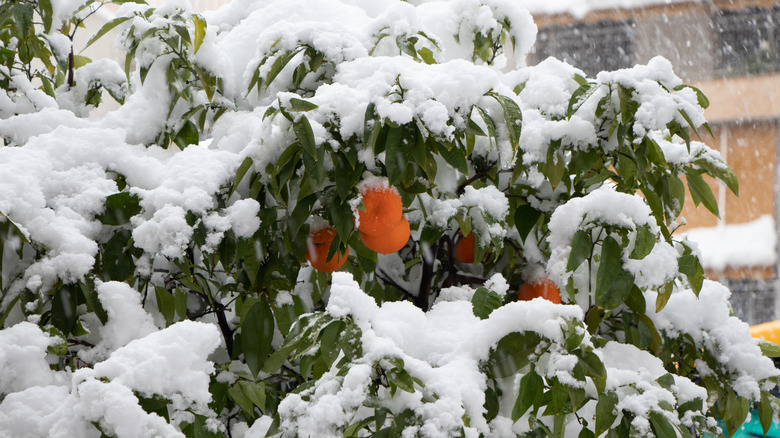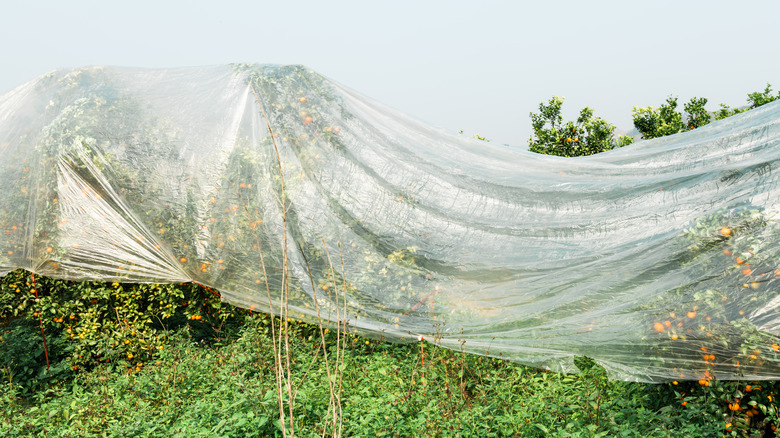The Best Way To Care For Citrus Trees During Winter To Keep Them Thriving
With abundant harvests of juicy fruit, verdant year-round foliage, and vivid springtime blooms, growing citrus trees is gratifying work. But these trees are finicky about their environmental preferences, and flourish in consistently warm climates. So, even if you're growing them within their USDA hardiness zones of 8 to 11, don't be complacent thinking that the weather is not a threat. In winter time, frost that lasts a few hours can damage or even kill your orange, grapefruit, or lemon trees. And, as you know if you live in a subtropical climate where citrus trees thrive, the mercury does occasionally dip below 32 degrees Fahrenheit. For example, in Florida, some winters usher in sustained bouts of frigid weather with periods of below-freezing temperatures. These weather events may be sporadic, but when they occur, they can be catastrophic for the citrus trees in your yard.
Fortunately, there are things you can do to keep your citrus trees healthy this winter. The care strategies are largely aimed at protecting the citrus trees from frost and involve irrigating the trees ahead of cold weather, using micro-sprinklers, and covering the trunks with insulated tarps. Choosing a suitable location is a viable long-term strategy for shielding your citruses from the bitter cold. Meanwhile, refraining from aggressive pruning before cold weather arrives can prevent damage to new growth. Below, we'll walk you through all of these citrus tree winter care strategies in greater depth.
Winter care strategies for citrus plants
If you're researching winter care tips ahead of planting your citrus trees, good on you. Choosing an appropriate location can go a long way in keeping the trees out of chilly winds' path. For best results, plant the tree in a place where your house, a fence, or other trees can function as a windbreak. Situating the trees on the southern part of your lawn is also an effective way to shield the citruses from cold blasts of northern winds. That said, make sure the object that serves as a windbreak doesn't block sunlight — citrus trees need full sun. Also, the tree should be at least 15 feet away from any structure or another, larger tree.
Certain irrigation strategies can create an effective layer of defense against frost. Since soil does a better job of storing warmth when it's wet, water the citrus trees generously before the mercury falls below 32 degrees. That said, don't waterlog the trees — citruses won't tolerate oversaturated soil. Installing micro-sprinklers also offers a way to protect the tree's leaves, fruit, and bark from frost. If your citrus trees are young, boost the effectiveness of a micro-sprinkler system and protect the trees from frost damage by wrapping them with an insulated tarp, burlap, or a frost cloth. The tarp should extend from the top of a tree down to about 24 inches above ground.
Crucially, avoid pruning citrus trees too aggressively late in the season. The best time to prune citrus trees is in early spring. In the fall, you may have no choice but to cut off dead branches, and there's nothing wrong with doing that. But pruning the tree too much before winter leaves new growths vulnerable to frost, so it's best to hold off on extensive trimming until the following year.

